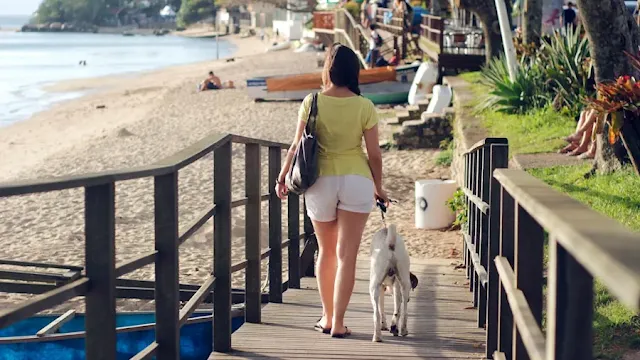The ultimate checklist for travel to India
Table of Contents
India, with its kaleidoscope of cultures, cuisines, and landscapes, is a dream destination for adventurers, history buffs, and spiritual seekers alike. From the iconic Taj Mahal to the serene backwaters of Kerala, planning a trip to India is an exhilarating yet complex task. I remember my first trip to India in 2019—standing in awe at the vibrant chaos of Delhi’s Chandni Chowk, I realized how crucial thorough preparation was to truly embrace the experience. This detailed to-do list covers everything from visas and vaccinations to cultural tips, ensuring your journey to India is seamless and unforgettable. For the latest travel advisories, check the US State Department India page.
Essential Documentation for Travel to India
Passport and Visa: Your passport must be valid for at least six months beyond your entry date into India. Most travelers, including US citizens, require a visa. Apply for an Indian e-Visa through the official Government of India website, choosing the appropriate type (e-tourist, business, or medical). Processing times vary, so apply at least 4–7 days before travel. For additional visa information, visit the Indian Embassy in the USA.
Travel Documents for India Flights
Travel Insurance: Choose a comprehensive travel insurance plan covering medical emergencies, trip cancellations, and lost luggage. Ensure the policy is valid in India and includes 24/7 emergency support. Check for tailored insurance plans frm reputable companies for international travel.
International Driving Permit (IDP): Planning to drive? Obtain an IDP from AAA, alongside your valid driver’s license. Note that road conditions in India can be challenging, so familiarize yourself with local driving norms via Wikipedia’s guide on driving in India.
Preparing for Your Trip
Vaccinations: Consult a travel health specialist 4–6 weeks before departure for recommended vaccinations, such as Hepatitis A, Typhoid, and Tetanus. Check the CDC’s India travel health page for region-specific advice, especially if visiting rural areas.
Medications: Pack enough prescription medications for your entire trip, plus a small buffer. Carry a doctor’s note or prescription for verification, as some medications may require clearance for import. Include a basic first-aid kit with items like antidiarrheals, pain relievers, and antihistamines. Confirm import regulations on the Central Board of Indirect Taxes and Customs website.
Local Currency and Payment Methods: The Indian Rupee (INR) is the official currency. Exchange some currency before departure for convenience, but ATMs are widely available in cities. Major credit cards are accepted in urban areas, but carry cash for rural regions. Learn more about currency regulations from the Reserve Bank of India.
Tech Accessories: Bring chargers, a universal plug adapter (India uses Type C and D sockets), and a power bank. Verify your phone’s compatibility with Indian networks. Note that satellite phones are illegal for import, per the US State Department.
Cultural Research: India’s cultural diversity requires region-specific preparation. Research local customs, dress codes, and basic phrases in Hindi or regional languages like Tamil or Bengali. Resources like Rough Guides India and community insights on Reddit’s solo travel thread offer valuable tips.
Safety and Precautions
Food and Water Safety: Stick to bottled water and ensure food is freshly cooked. Peel fruits and vegetables to avoid contamination. Refer to WHO’s food safety guidelines for travelers.
Respect Local Sensitivities: Dress modestly, especially at religious sites, and seek permission before photographing people. Learn about cultural norms via Wikipedia’s overview of Indian culture.
Stay Informed: Monitor travel advisories and local news for your destinations. Register with the US STEP program for alerts. Be cautious of scams in tourist areas, as noted in government advisories.
Transport Safety: Use reputable transport like Ola or Uber. For taxis or auto-rickshaws, agree on fares upfront or insist on the meter. India’s railway network, operated by IRCTC, is a reliable option for intercity travel.
With careful planning, your trip to India will be a vibrant, enriching adventure. This checklist ensures you’re prepared for a journey filled with cultural immersion and unforgettable experiences.
Frequently Asked Questions
How do I start planning a trip to India?
Begin by researching your destinations, checking visa requirements on indianvisaonline.gov.in, securing travel insurance, and reviewing the US State Department’s India page for advisories.
What do I need to do before traveling to India?
Obtain a valid passport, apply for an Indian visa, get recommended vaccinations, purchase travel insurance, and research local customs and safety tips.
What do I need to pack for a trip to India?
Pack lightweight clothing, prescription medications, a first-aid kit, a universal plug adapter, and modest attire for religious sites. Include sunscreen and insect repellent for outdoor areas.
What do American citizens need to travel to India?
US citizens need a passport valid for six months beyond entry, an Indian visa, and proof of onward travel. Travel insurance is highly recommended.
Do US citizens need shots for India?
Recommended vaccinations include Hepatitis A, Typhoid, and Tetanus. Consult the CDC for itinerary-specific advice.
How much is an India visa for US citizens?
Visa costs vary by type and duration (e.g., $25–$100 for an e-Visa). Check the latest fees on indianvisaonline.gov.in.
What should be declared at Indian customs?
How much worth of gifts can I bring to India
India Customs Documentation: A Complete Guide for Travelers










